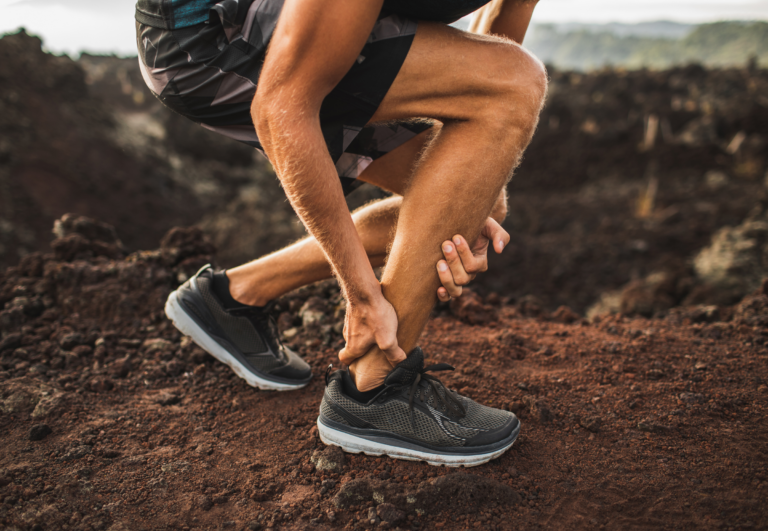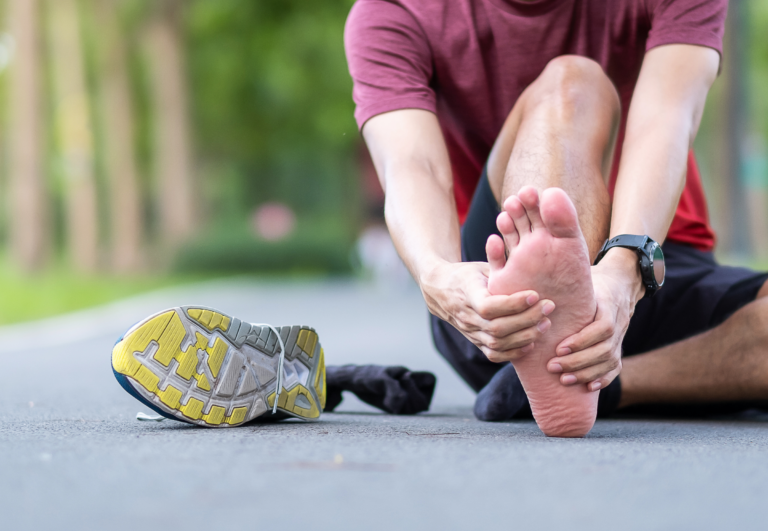How to Warm Up Before a Trail Run – Key Routine, Exercises, and Stretches!
Warming up before a trail run is crucial to prepare your body for the challenges of uneven terrain and variable elevations.
A proper warm-up increases your heart rate, loosens your joints, and gets your muscles ready for the activity ahead. This is especially important in trail running, where you’ll encounter a range of motions and surfaces that require flexibility and responsiveness from your body.
Starting with a gentle walk, especially if you’ve been indoors, helps transition your body and mind into an active state. Incorporating dynamic stretches such as lunges with variations in direction can activate the muscles you’ll use most during your run. This raises your internal temperature and increases blood flow to your legs, reducing the risk of injury and enhancing your performance.
Make sure to tailor your warm-up routine to the distance and intensity of your trail run. For shorter and more intense runs, you’ll need a longer and more thorough warm-up to prime your muscles for rapid exertion. By gradually raising your heart rate and dynamically stretching your muscles, you’ll be well-equipped to tackle the trail with confidence and safety.
Best Warm-Up Routine Before a Trail Run
A good warm-up routine before a trail run should activate your entire body, improve your range of motion, and prepare your muscles for the variable terrain.
Here’s a routine that fits within 10-15 minutes:
- Easy Jog (3 minutes): Start with a light jog on flat terrain to gradually increase your heart rate.
- Dynamic Stretching (5 minutes):
- Leg Swings (1 minute): Stand on one leg and swing the other leg forward and back, then side to side, 10 swings in each direction per leg.
- Walking Lunges (2 minutes): Step forward into a lunge, 10 reps per leg, to open up the hip flexors.
- Arm Circles (1 minute): Extend your arms and perform 10 small and 10 large circles in each direction to loosen the shoulders.
- Ankle Rolls (1 minute): Lift one foot and roll the ankle clockwise and then counterclockwise, 10 times each way, then switch.
- Trail-Specific Drills (4 minutes):
- High Knees (1 minute): Lift your knees high as you run in place, engaging your core and hip flexors.
- Butt Kicks (1 minute): Kick your heels up towards your glutes to warm up your hamstrings.
- Power Skips (1 minute): Skip with a high knee drive, emphasizing height rather than distance, 30 seconds each leg.
- Grapevines (1 minute): Move laterally, crossing one foot over the other, to improve coordination and activate the side muscles.
- Strides (3-4 minutes):
- Perform 3-4 short (about 50-100 meters) accelerations on the trail, building up to a moderate pace before jogging back to the start as your recovery.
This routine ensures that you’re not only warming up the muscles and joints but also preparing your neuromuscular system for the agility and coordination needed on the trails.
Incorporate these tips into your trail running warm-up routine, and you’ll be ready to tackle any terrain that lies ahead.
Core Warm-Up Exercises for Trail Runners
Core warm-up exercises are critical in preparing your body for a trail run. This process primes the muscles, enhances your range of motion, and reduces the risk of injury.
Dynamic Movements
Dynamic stretching is key to activating your joints and muscles. Begin with leg swings: 10 front-to-back and 10 side-to-side to initiate neuromuscular activity. Follow with lunges to improve flexibility and balance.
- High Knees: Perform these for 20-30 seconds, promoting movement specificity and engaging hip flexors, which is crucial for maintaining your running form.
- Leg Swings: Stand on one leg, swing the other leg forward and back, then side to side, each for 10 repetitions to boost flexibility and your range of motion.

Targeted Muscle Activation
For targeted core activation, ensure you engage muscles that will enhance your stability, strength, and energy throughout the run.
- Planks: Hold for 30 seconds to one minute to build core strength and stabilize your torso.
- Glute Bridge: Complete 10 reps to activate your glutes, preventing muscle fatigue during uphill sections of your run.
Both dynamic movements and targeted muscle activation are essential to a comprehensive core warm-up routine, providing you with the foundation for a successful and injury-free trail run.
Warm-Up Tips for Trail Running

Effective warm-up strategies enhance your energy, focus, and muscle temperature, ensuring you’re set for the trail run ahead. Weather conditions and strategic nutrition play pivotal roles in this preparatory phase.
Adapting to Weather Conditions
When trail running, especially in cold weather, it’s critical to adapt your warm-up to avoid injury and optimize performance. Start by wearing appropriate layers that you can remove as your body temperature increases. Here’s what you should focus on:
- Breathing: Deep, rhythmic breathing helps elevate internal body temperature.
- Dynamic Movements: They boost circulation and increase muscle temperature. Include exercises such as leg swings and arm circles.
If the weather is warm, avoid overdressing and shorten your warm-up to prevent overheating.
Strategic Nutrition and Hydration
Your warm-up for a trail run starts with what you consume. Hydration and energy are key.
- Pre-Run Meal: Consume a light breakfast 1-2 hours before the race to fuel your muscles. Opt for foods high in carbohydrates with a moderate amount of protein and low in fat.
- Hydration: Begin hydrating the day before the event. On race day, drink water consistently, and consider a sports drink to replenish electrolytes if you’re sweating heavily. Here’s a quick guide:
| Timeframe | Suggested Intake |
|---|---|
| Night before | Water, avoid excessive alcohol or caffeine |
| Pre-race (1-2hrs) | 500-700ml of water or sports drink (if necessary) |
| Warm-up | Sip water to maintain hydration, don’t overdrink |
Maintaining focus on strategic nutrition and hydration will ensure you have the energy and proper hydration needed for your trail run.
Preventing Injuries Through Proper Warm-Ups
Preventing injuries during trail runs begins with your warm-up routine. Warmed muscles and joints are less prone to sprains and strains. Incorporate dynamic stretching to target key areas such as ankles, hips, and glutes. This form of stretching improves neuromuscular function and stability, which are crucial for running on uneven terrain.
Your Warm-Up Checklist:
- Dynamic Stretching:
- Ankles & Hips: Aim for movements that mimic running motions, enhancing flexibility and stability.
- Glutes Activation: Exercises like leg swings and lunges will activate these muscles, reducing the likelihood of injury.
- Neuromuscular Activation:
- Integrate balance and coordination drills to boost neuromuscular connections, which help in maintaining stability during runs.
- Gradual Cardio Increase:
- Start with a brisk 5-minute walk.
- Progress to a slow jog, 2-3 minutes per mile slower than your planned pace.
Post-run, don’t skip the cool down. This helps in reducing soreness and aids in rehabilitation if you’re coming back from a previous injury. A cool down may include a slow jog tapering to a walk, followed by static stretching. This helps to ensure that you stay injury-free and ready for your next run.






